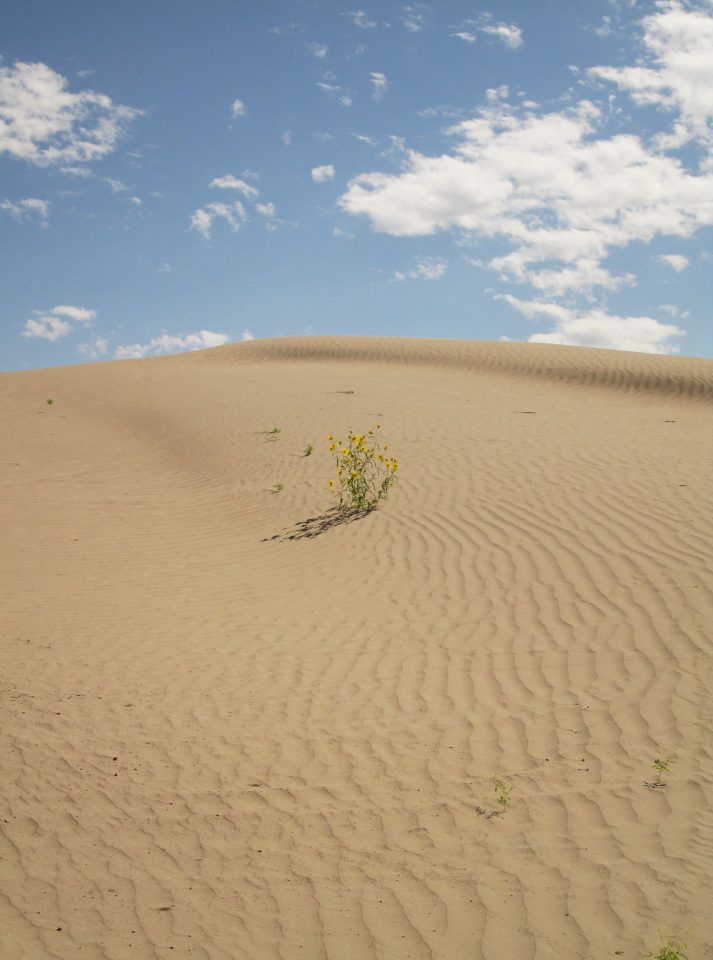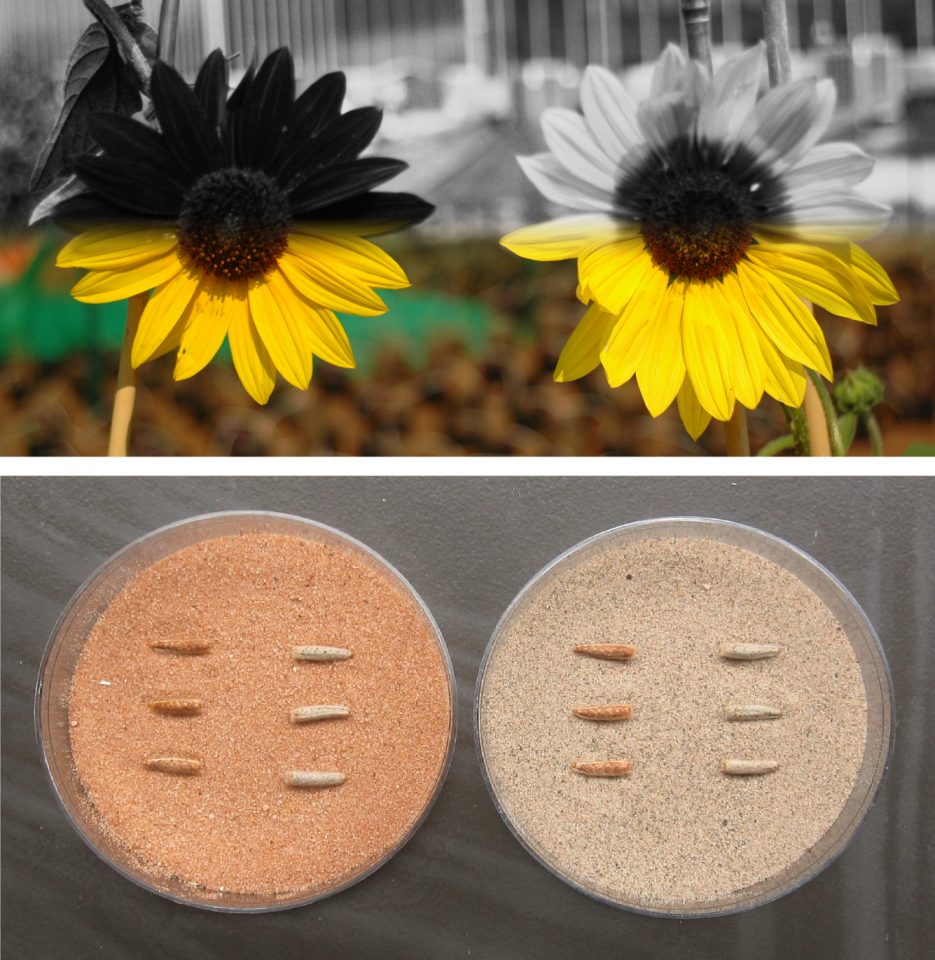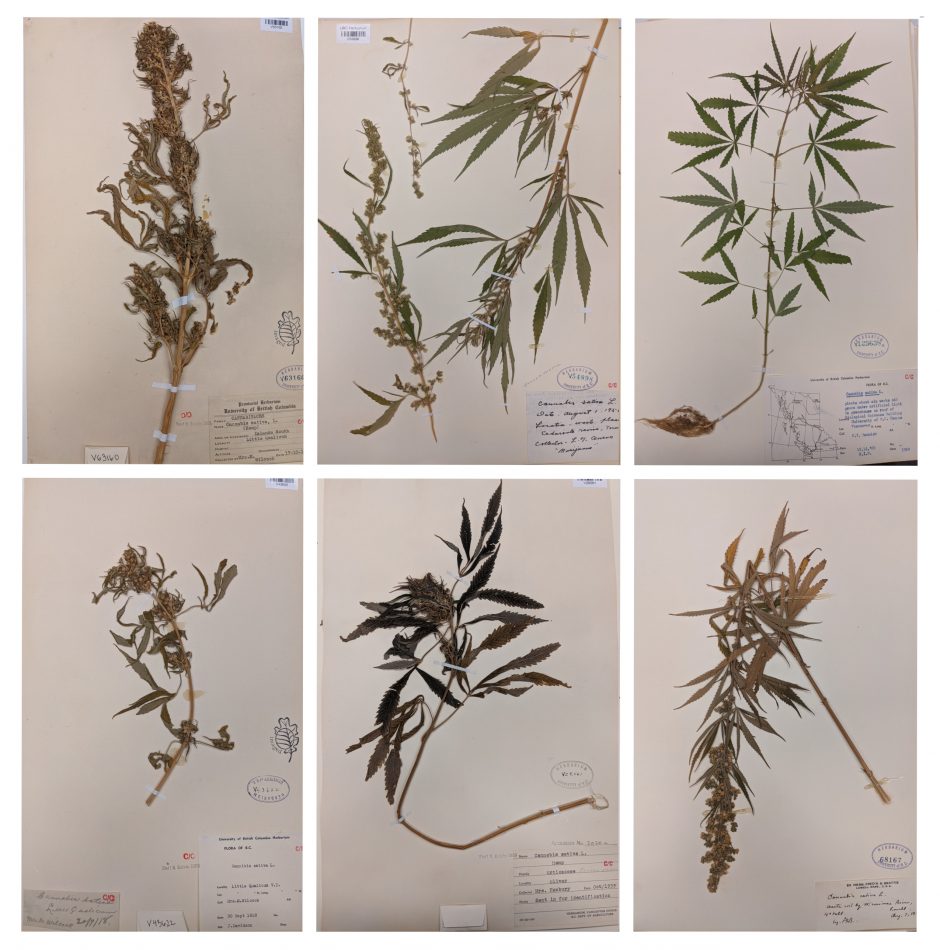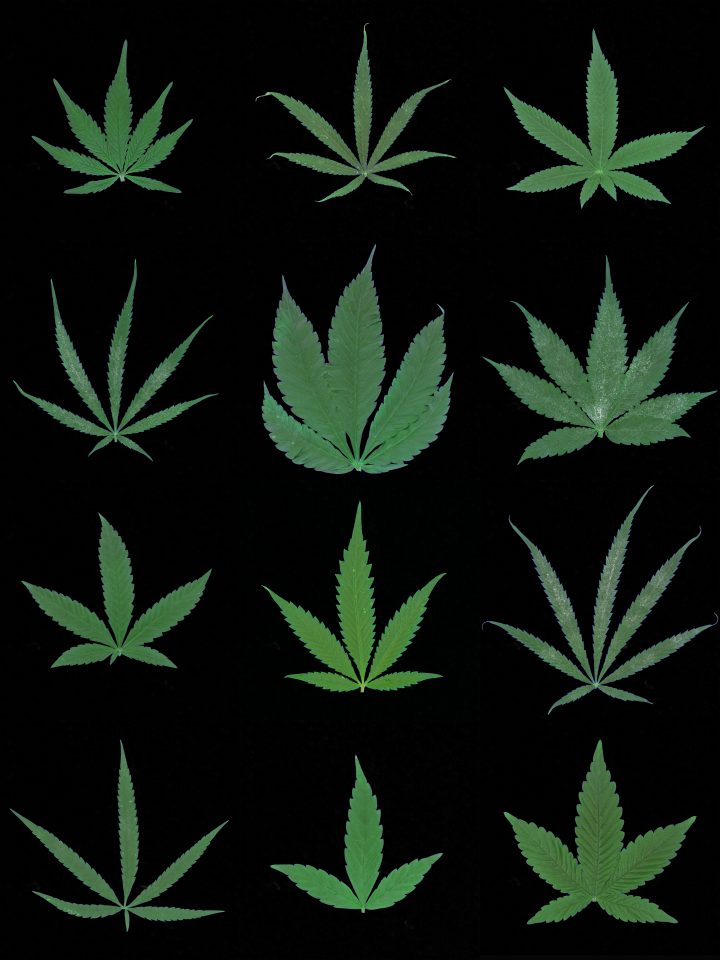Plant adaptation
Plants are able to survive in all kinds of environments. A main focus of our work is trying to understand how they do that – which genes are important for adaptation, and how these genes help mediate the interactions between plants and their environment.
The dual goal of our research is to get better insights into the mechanisms of adaptation, and to identify genes and adaptive strategies that can help develop better, more sustainable crops that are more productive, require fewer external inputs, are more resistant to stresses, and reduce agriculture’s carbon footprint.
Sunflower diversity
From summer garden ornamentals to industry-scale oil production, sunflowers are an important crop that was domesticated in North America about 4,500 years ago. However, many wild sunflower species can be found in nature, exhibiting extensive genetic and phenotypic diversity. They are adapted to grow in a variety of environments, including rather hostile ones like sand dunes, deserts, and salt marshes, as well as in human-disturbed locations like roadsides.

Climate adaptation in wild sunflowers
Using large-scale GWAS and GEAS in wild sunflower populations, we have identified dozens of loci controlling adaptive traits or associated with climate variables.
We are now characterizing the genes controlling this adaptive variation, to understand their function, how they affect plant development and fitness in nature, and if they can contribute to improve yield and sustainability of cultivated sunflower.
We are particularly interested in the role of large chromosomal inversions (haploblocks), which act like supergenes controlling and maintaining complex adaptations in sunflower ecotypes.
Adaptive colour variation
Colour is a quintessentially adaptive trait. We are studying colour variation in sunflower inflorescences and seeds, to understand how this variation is regulated at the genetic level, and its role in adaptation.
In particular, we are interested in ultraviolet floral patterns and seed camouflage. Floral UV patterns are highly variables in wild sunflower populations; we found that this variation is controlled by a single transcription factor, and helps plants both to attract pollinators and to reduce water losses in dry climates.
In desert sunflowers, seed colour often matches the colour of the soil. We found that colour variation is a defensive camouflage mechanisms preventing bird predation, and are studying its genetic and phytochemical basis.

Cannabis diversity
Cannabis is one of the oldest cultivated plants, and has been domesticated for a number of uses (medicinal/recreational, seeds and fiber production). However, there is still much that we don’t know about this plant, since it has been largely illegal to grow and study it for the past several decades. Our work focuses on understanding cannabis diversity and domestication, and on developing cannabis strains that are more resistant and have a smaller carbon footprint.

Genomic resources development
We have developed a number of genomics resources and dataset to support cannabis research and breeding.
This includes a cannabis pangenome, composed of 12 novel chomosome-level-diploid assemblies, and a 537-strong, fully re-sequenced Cannabis Diversity (CanD) association mapping population.
Among other things, we are using these resources to study the structure and evolution of sex chromosomes in cannabis. We are also using herbarium genomics to obtain a better understanding of cannabis diversity throughout its range, and of its domestication history.
Sustainable crop improvement
While drug-type cannabis has become a major crop in the past few years, it lacks many desirable agronomic characteristics. We are collaborating with industry partners to identify genes that can be used for cannabis improvement.
One of the major problems in cannabis cultivation is powdery mildew, a fungal disease that can compromise entire growth rooms. We are using our CanD population to identify and characterize loci conferring resistance to this disease.
We also aim at reducing the enormous carbon footprint associated with indoor cannabis cultivation, by identifying genes and traits that will be used to develop high-quality field-grown cannabis varieties.
